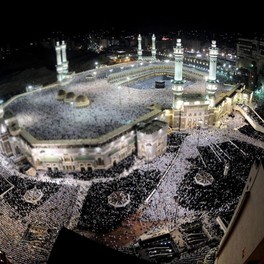What is the meaning of Umrah ?

One of the deepest desires in the heart of every believer is to visit the holy lands — to step into the sacred cities of Mecca and Medina, to walk in the footsteps of our beloved Prophet Muhammad (peace be upon him), and to lay their face on the blessed soil where Islam was born.
But what exactly is Umrah? And how is it different from Hajj?
What Is Umrah?
The word Umrah originates from Arabic and translates to “visit” in English. In Islamic terminology, Umrah is a pilgrimage to Mecca that involves specific rituals but can be performed at any time of the year, unlike Hajj, which takes place only once a year during the month of Dhul-Hijjah.
Umrah consists of the following main steps:
-
Entering into Ihram (a sacred state of purity),
-
Performing Tawaf (circumambulating the Kaaba seven times),
-
Doing Sa’y (walking seven times between the hills of Safa and Marwa),
-
Shaving or shortening the hair, and
-
Exiting the state of Ihram.
These acts are performed solely for the sake of Allah, as commanded in the Qur'an:
“And complete the Hajj and Umrah for Allah.” (Surah Al-Baqarah, 2:196)
The Spiritual Value of Umrah
The Prophet Muhammad (peace be upon him) said:
"The pilgrims of Hajj and Umrah are the guests of Allah. If they ask Him for something, He grants it. If they seek His forgiveness, He forgives them.”
(Reported by Ibn Majah)
Umrah holds immense spiritual value and can be performed at any time of the year, unlike Hajj. It is especially recommended during the month of Ramadan, as performing Umrah in Ramadan carries the reward of Hajj, according to a hadith.
However, within the Hanafi school, performing Umrah on the five Days of Tashreeq (from the morning of Arafah to the sunset of the fourth day of Eid al-Adha) is considered prohibitively disliked (makruh tahrimi). Other Islamic schools permit it during these days with some differing conditions, especially for those not performing Hajj.
Umrah vs. Hajj: What’s the Difference?
While both are pilgrimages to Mecca, Hajj and Umrah differ in many significant ways:
| Aspect | Hajj | Umrah |
|---|---|---|
| Obligation | One of the five pillars of Islam; obligatory once in a lifetime (if able) | Not obligatory in all schools; Sunnah or Fard depending on school |
| Timing | Only during specific days in Dhul-Hijjah (8–13th) | Can be performed any time of the year |
| Duration | Several days with complex rituals | Few hours to a day |
| Rituals | Includes Umrah rites plus Arafah, Muzdalifah, Mina, stoning, and animal sacrifice | Includes Tawaf, Sa’y, shaving/trimming hair |
| Title after performing | One becomes a “Hajji” | One is referred to as a “Mu’tamir” |
In short, Hajj is the major pilgrimage, while Umrah is often called “the lesser pilgrimage” (Hajj al-Asghar).
Types of Rulings According to Islamic Schools
-
Hanafi & Maliki: Umrah is Sunnah Muakkadah (strongly recommended).
-
Shafi’i & Hanbali: Umrah is considered Fard (obligatory once in a lifetime).
According to the Hanafi school, there are two obligatory elements (Fard) in Umrah:
-
Ihram and Tawaf,
while Sa’y and shaving are considered wajib (necessary).
In other schools, the number of essential components may differ slightly, but the spiritual importance remains high.
Historical Context: How Many Times Did the Prophet Perform Umrah?
The Prophet Muhammad (peace be upon him) performed Umrah three times in his lifetime:
-
The Year of Hudaybiyyah, although he was prevented from entering Mecca.
-
The Year of Qada (the following year), when the Muslims were allowed to return and perform Umrah.
-
The Year of Ji’ranah, after the Battle of Hunayn.
Final Thoughts
Umrah is a beautiful act of worship that allows Muslims to renew their spirituality, seek forgiveness, and draw closer to Allah. Whether performed as preparation for Hajj or as a standalone pilgrimage, Umrah is a deeply personal and rewarding experience.
“And whosoever honors the symbols of Allah, then it is truly from the piety of the heart.”
(Surah Al-Hajj, 22:32)
Other Contents

